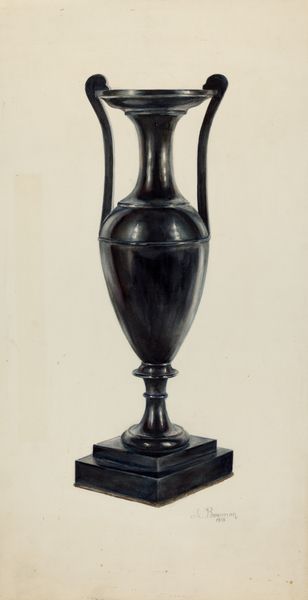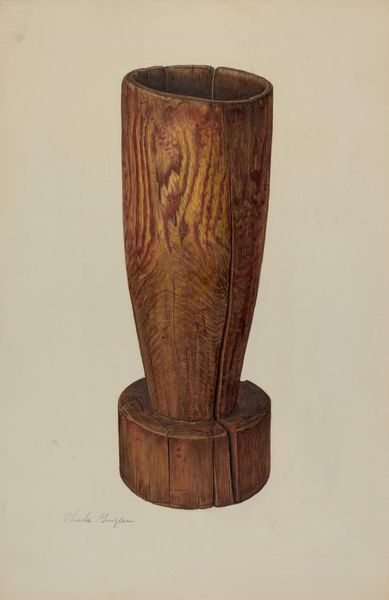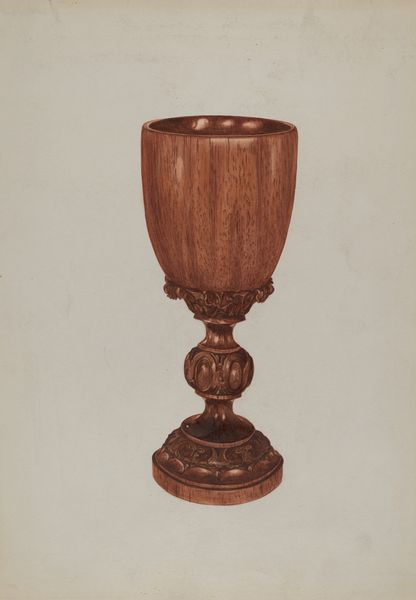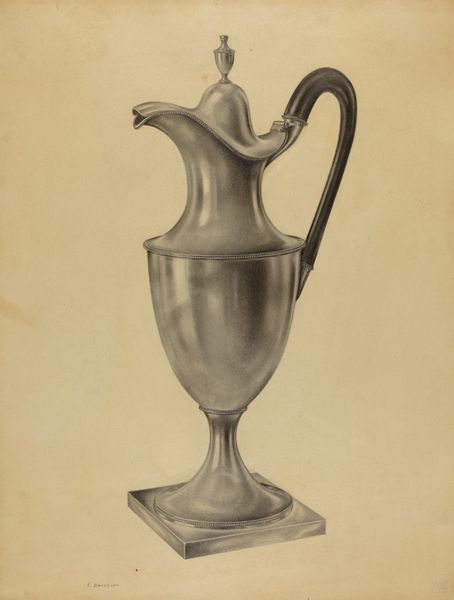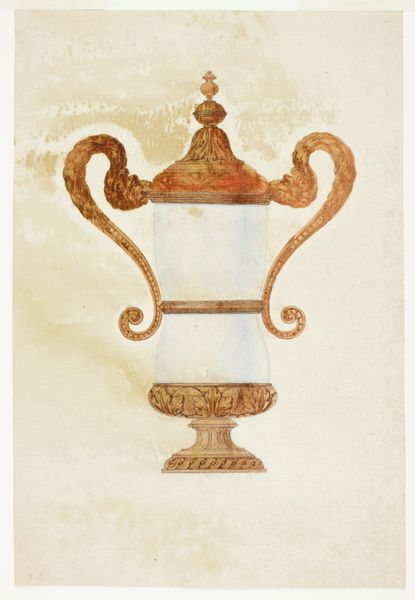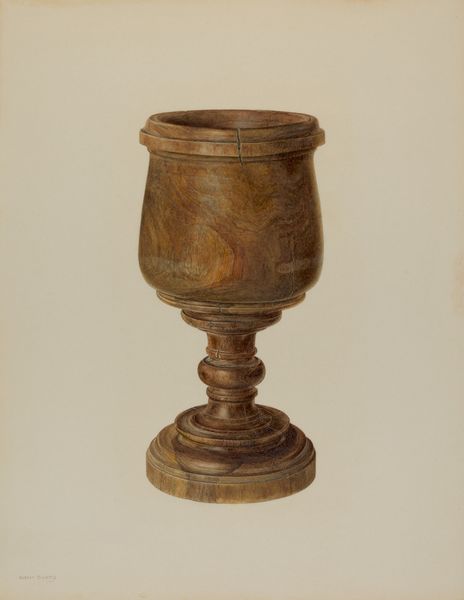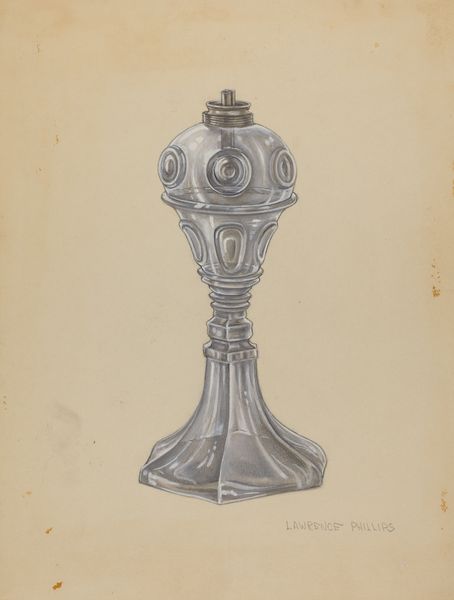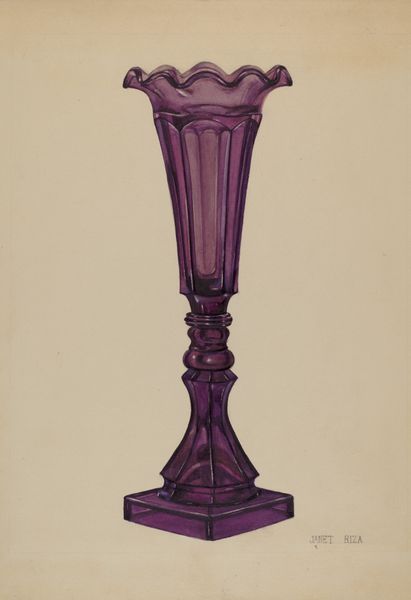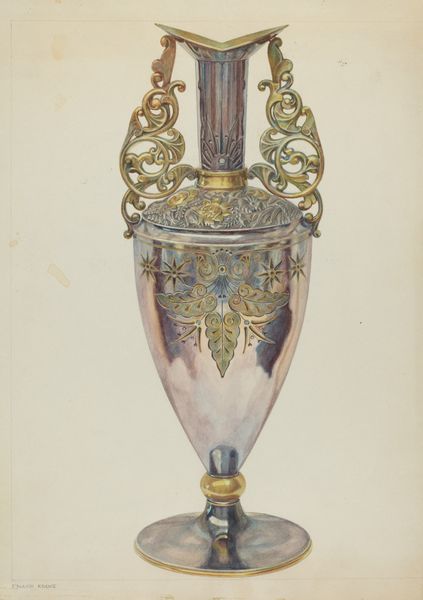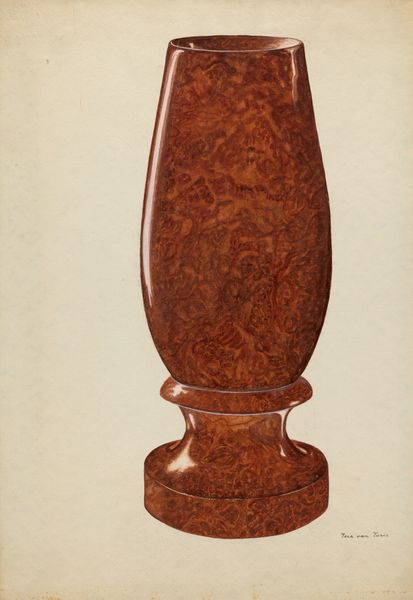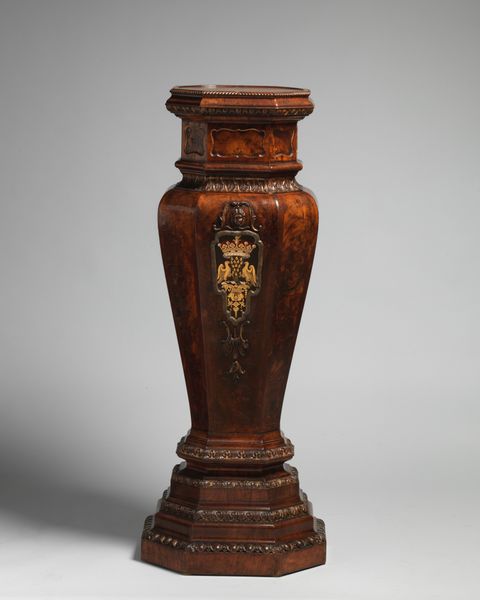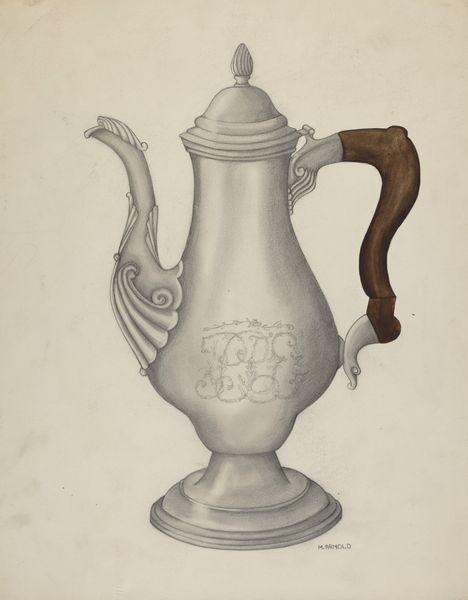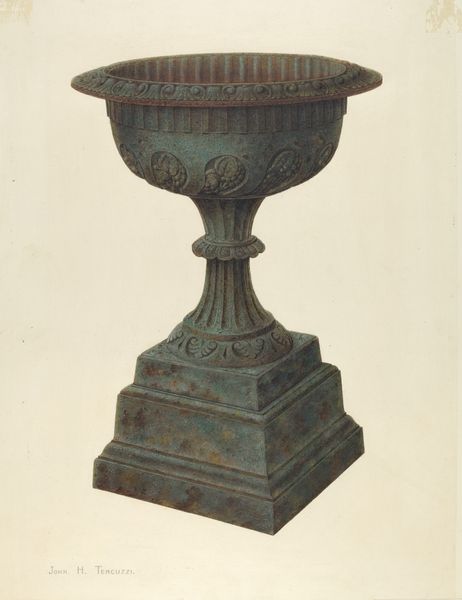
drawing, coloured-pencil
#
drawing
#
coloured-pencil
#
charcoal drawing
#
coloured pencil
#
watercolour illustration
Dimensions: overall: 35.4 x 25.5 cm (13 15/16 x 10 1/16 in.) Original IAD Object: 10" high; 5" wide
Copyright: National Gallery of Art: CC0 1.0
Curator: Here we have "Rosewood Vase," a drawing created around 1936 by Sebastian Simonet, crafted using colored pencils. What's your immediate reaction to this piece? Editor: Immediately, I'm struck by this odd mix of austerity and grandeur. The color palette is muted, but the vase itself has such a dignified, imposing presence, almost as if it’s posing for a portrait. It makes me think of an ancient, weathered monument—perhaps slightly worn with age. Curator: That's insightful. Simonet was indeed part of a generation grappling with the aftermath of World War I and the rise of industrialization. There's a deliberate return to classical forms here, but filtered through a distinctly modern lens. Note the flattened perspective, which aligns with design trends popular at that time. This imagery connects back to idealized, even imagined histories. Editor: I love that—"imagined histories." It does have a bit of theatrical flare to it. Almost feels like the artist unearthed some treasure and is presenting it to us, the public, on display. Although the vase's shape, I find quite intriguing too... Curator: Indeed, its form is particularly striking and typical of classic Greek urns, frequently linked with memorials and remembrance. This vase stands divorced from any setting in its simplicity of construction, as well as isolated by the background surrounding it, lending to it a detached aura that allows viewers a degree of individual interpretations. Editor: I'm finding that feeling too now...almost like staring at a stage prop. Maybe a play where everyone already knows their part but doesn’t know when the curtains are going to close on their scene. Melancholy then? Curator: Well, to see this, let’s remember that, art and design in the 1930s often served as propaganda tools. Representing stability and order through classically inspired forms served as implicit messages. The neutrality could have been intended. Editor: Fair point. Art isn't produced in a bubble. Okay, I concede... while the vibe I’m getting may seem mournful and bleak, it might’ve intended a calming serenity as this was constructed against uncertain futures during the age. Still, beautiful work. Curator: Absolutely. Considering the historical context coupled with Sebastian's skill as an artist adds profound depth to a still object. Editor: So very true; it’s more than "just a vase", wouldn't you say?
Comments
No comments
Be the first to comment and join the conversation on the ultimate creative platform.
